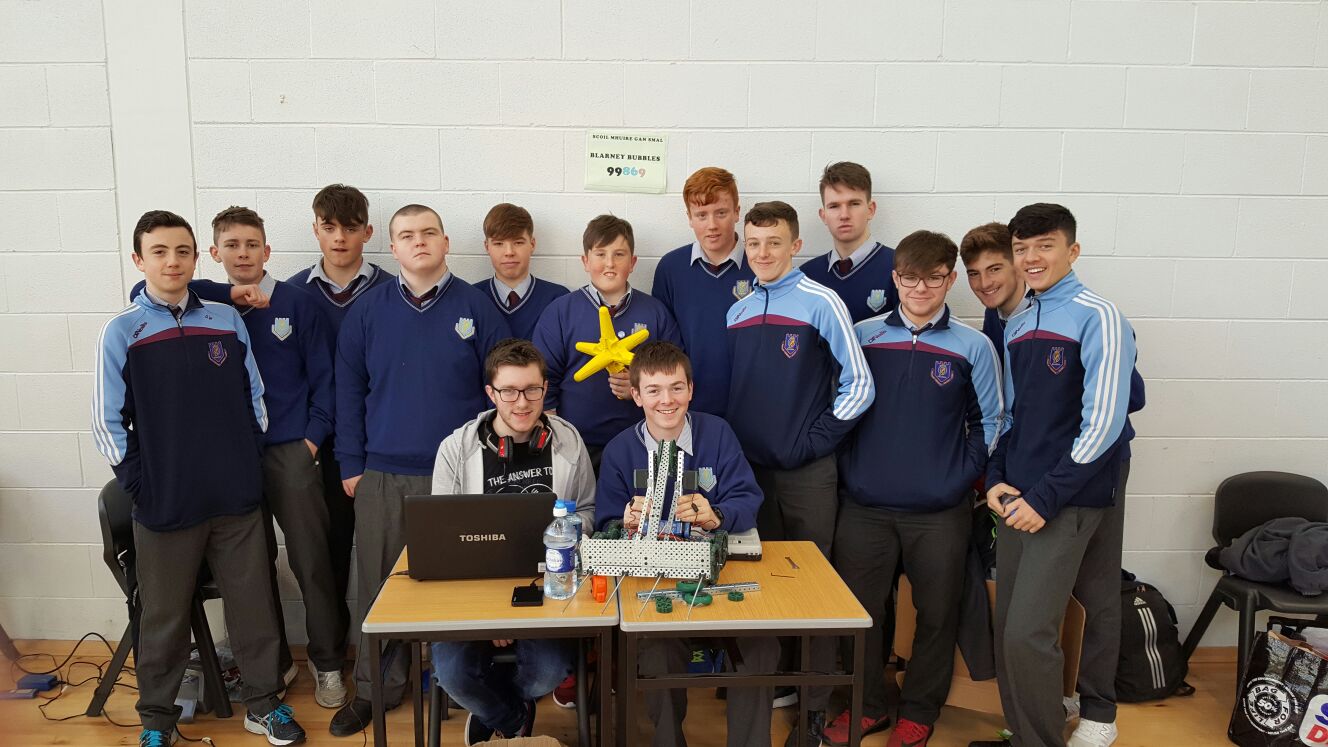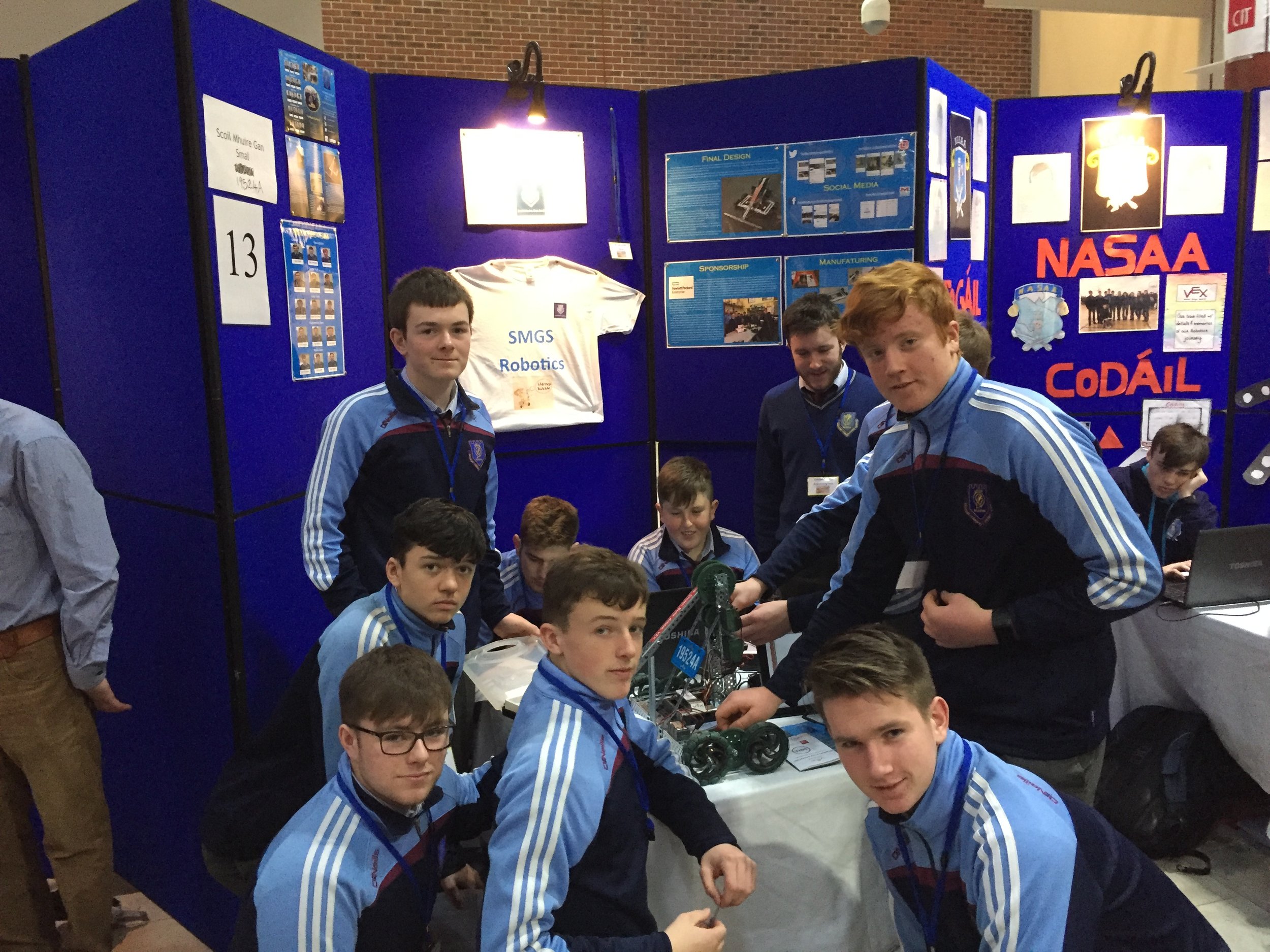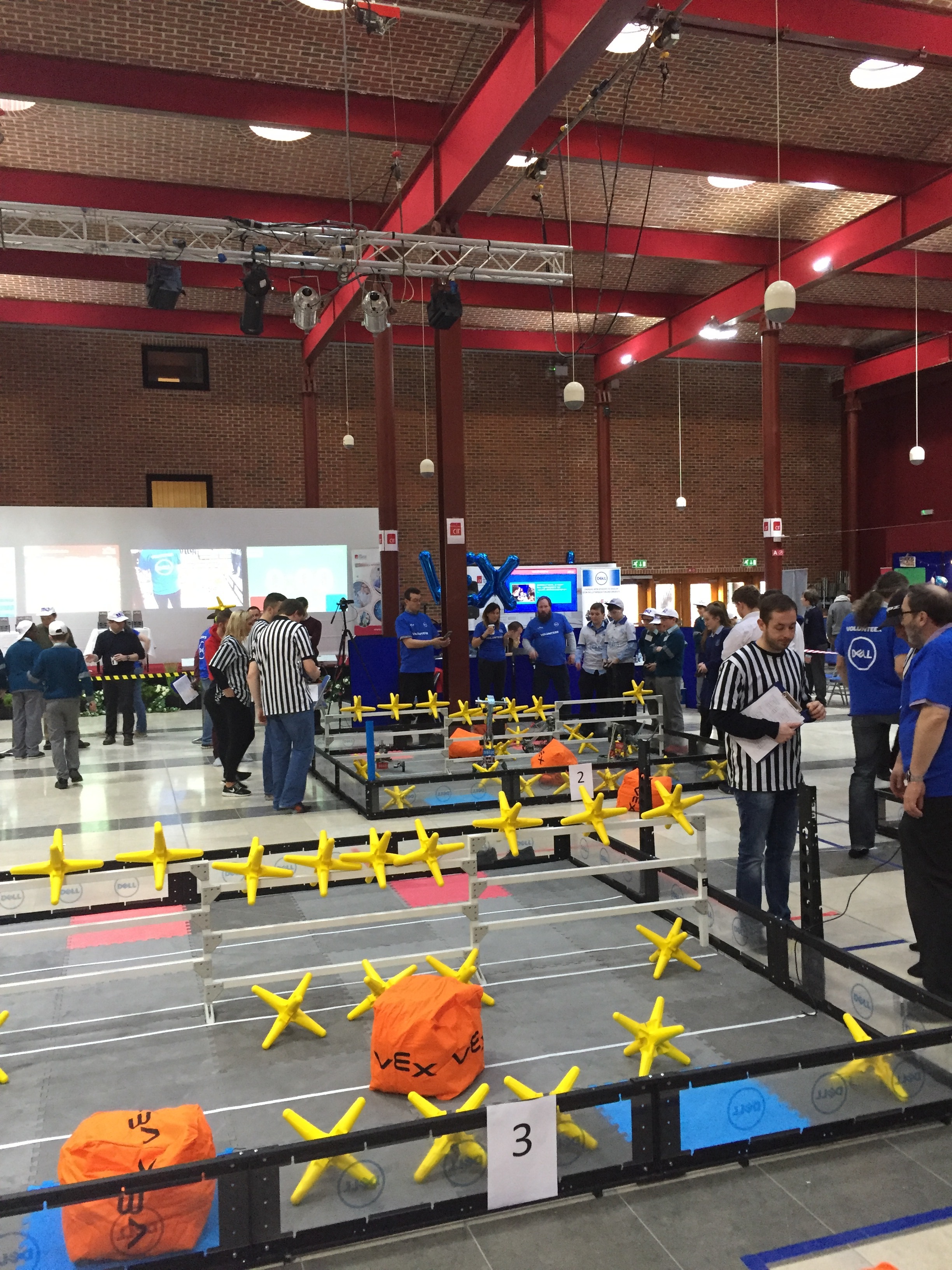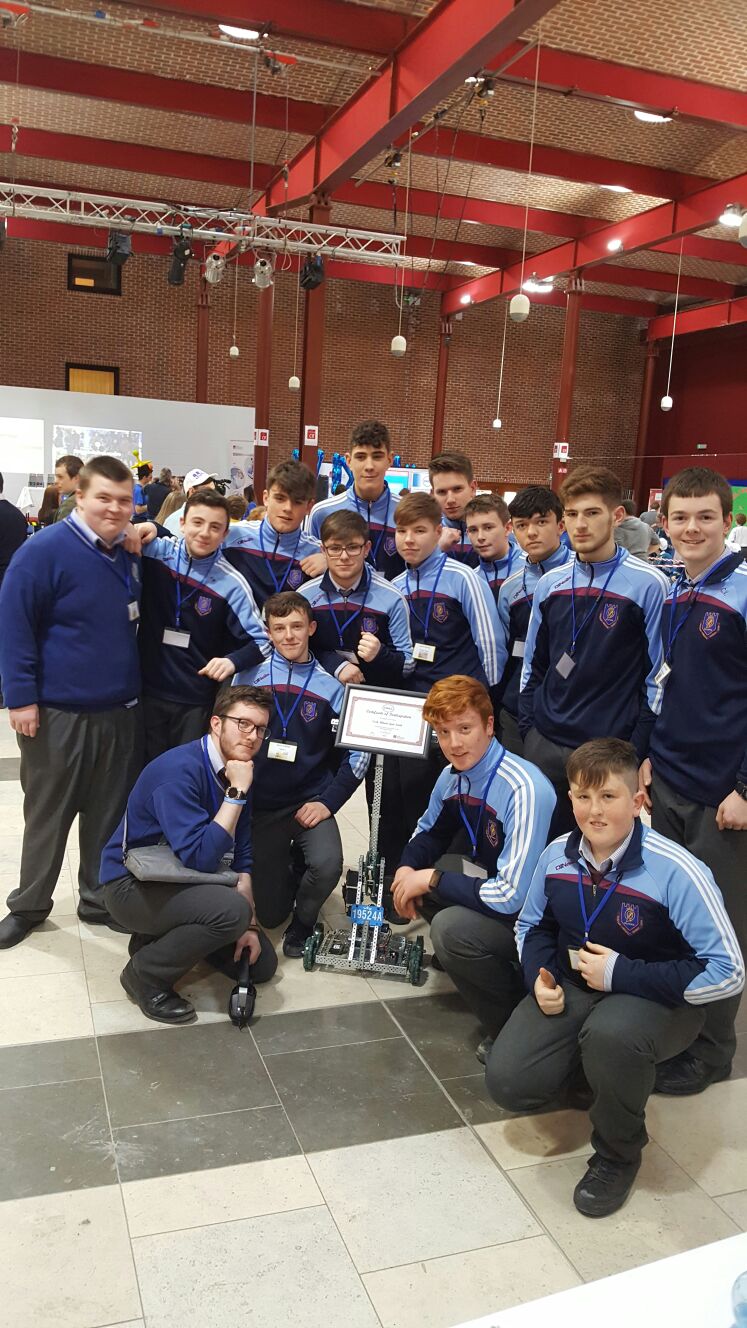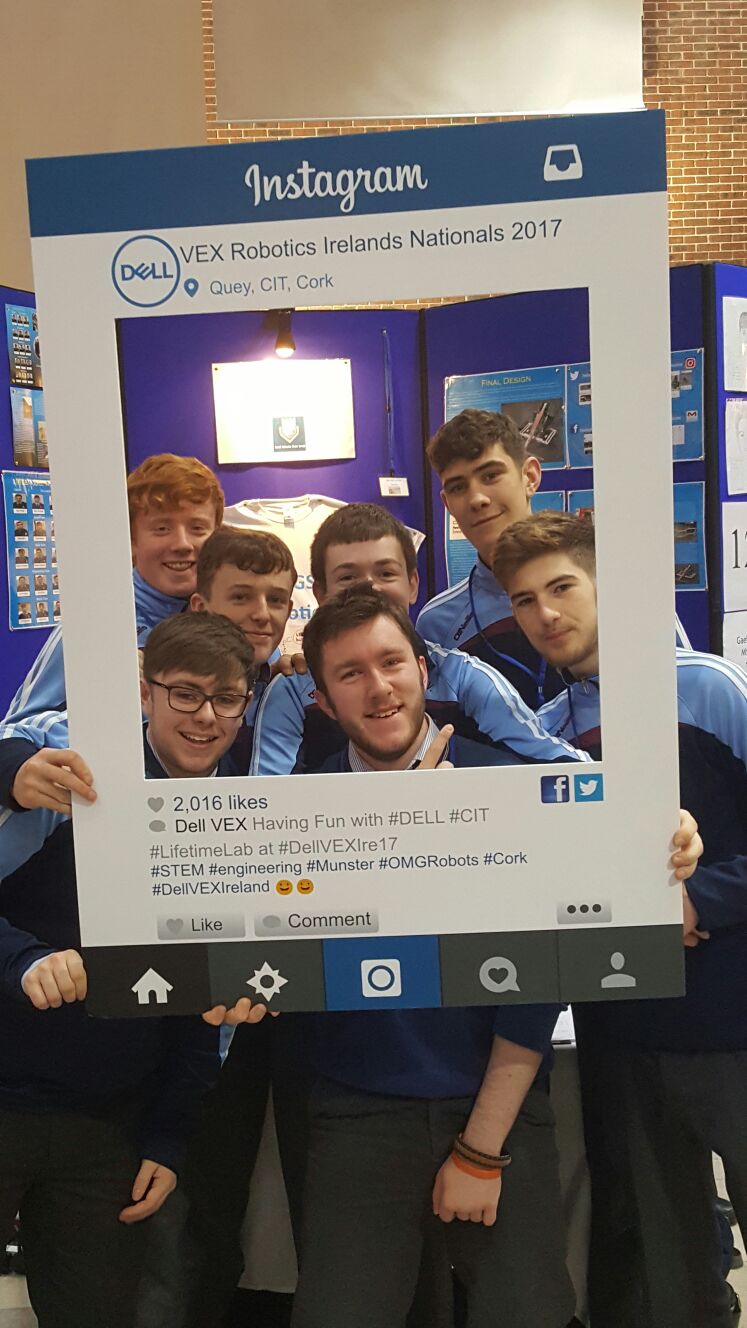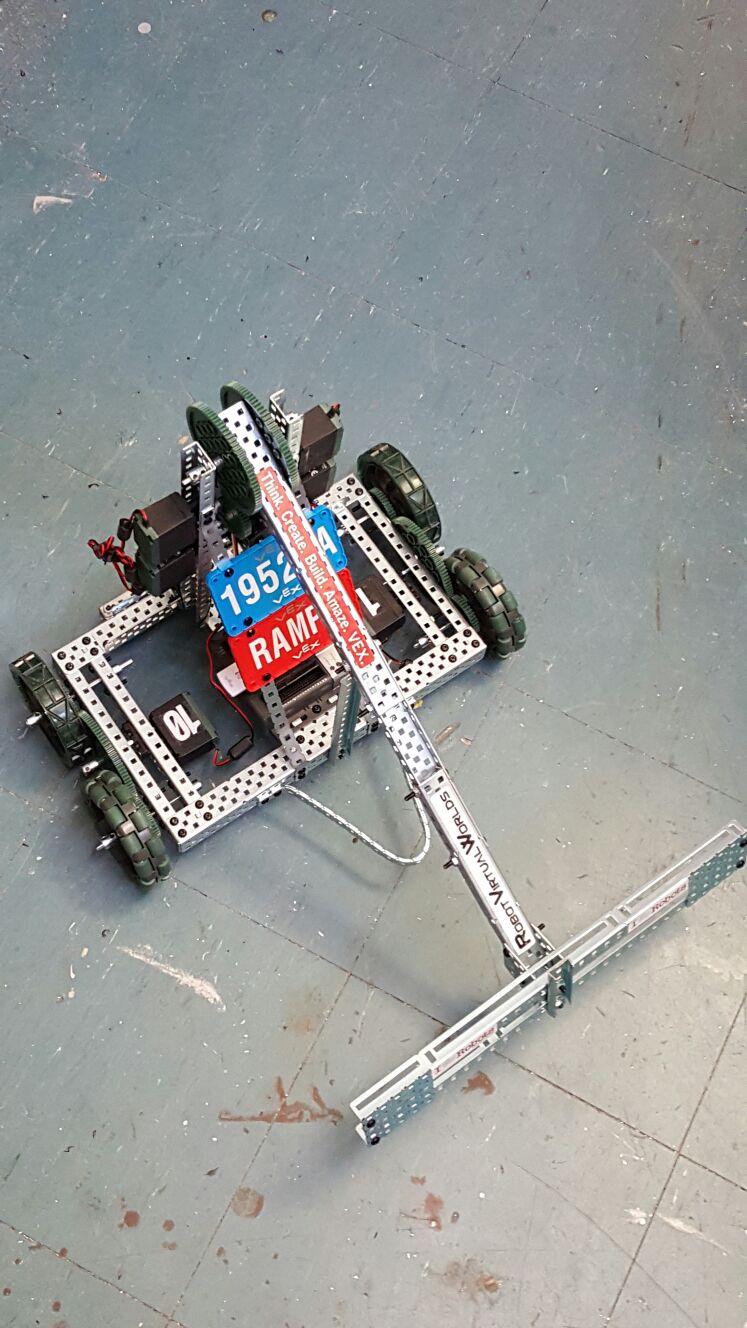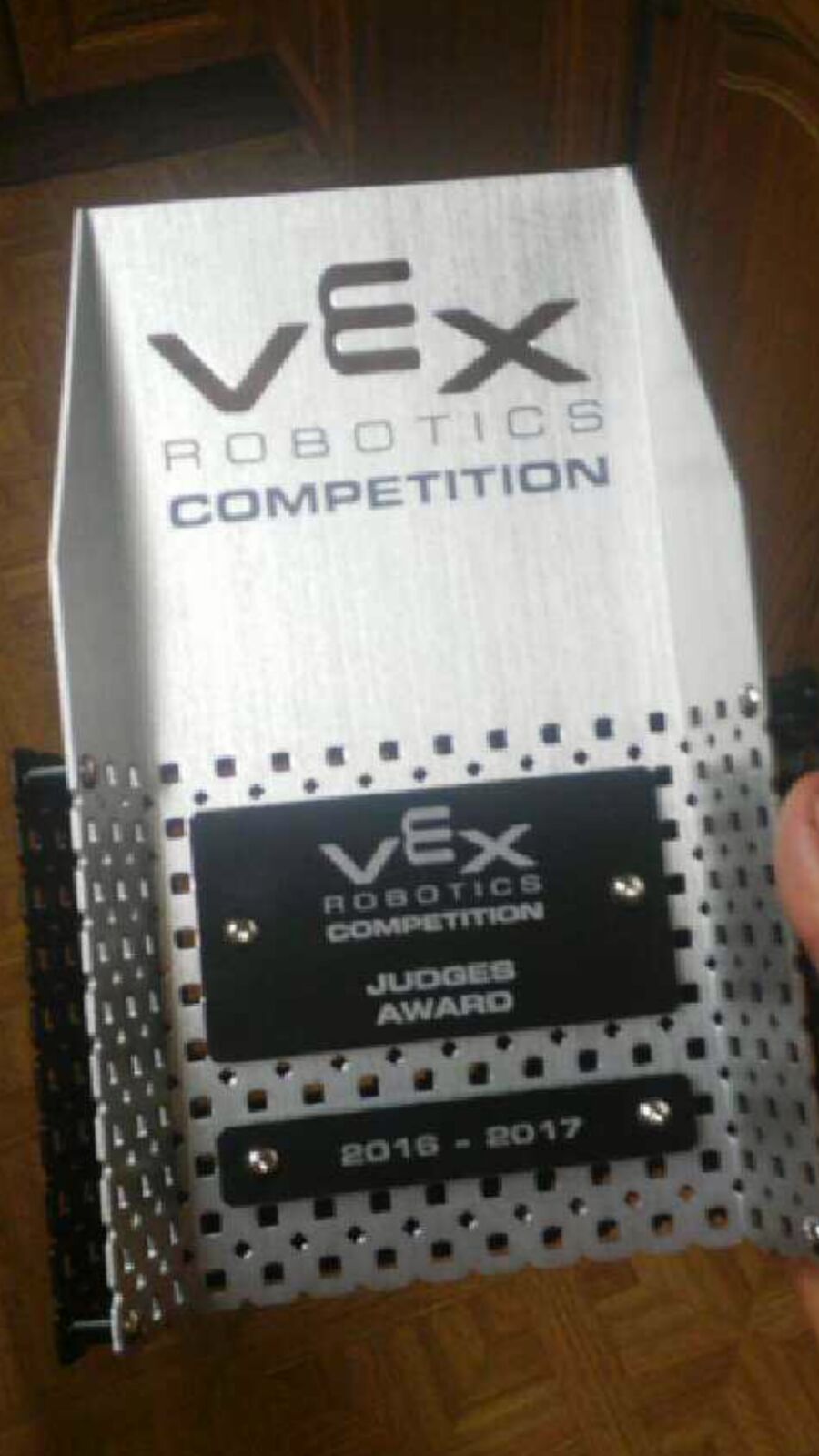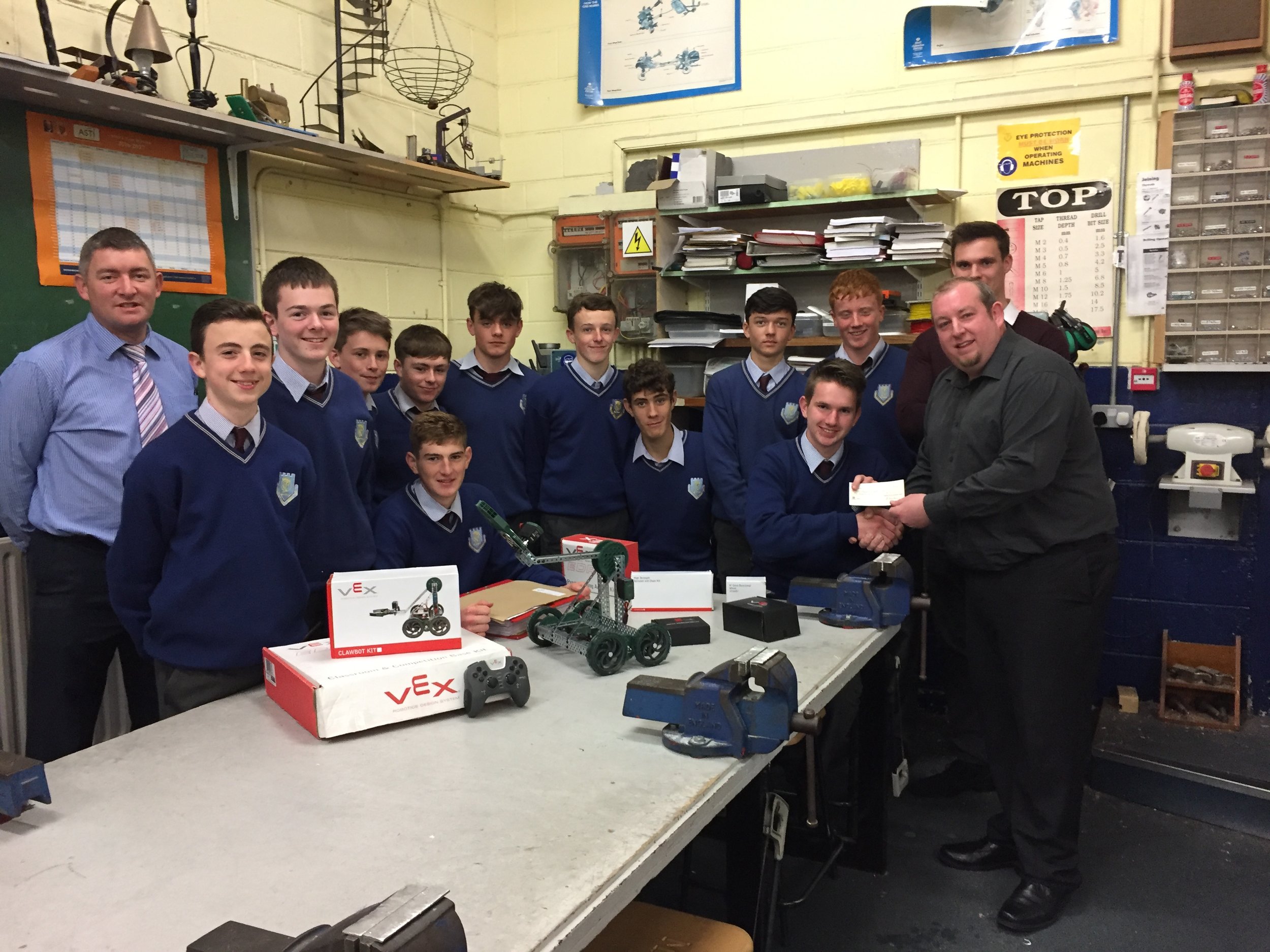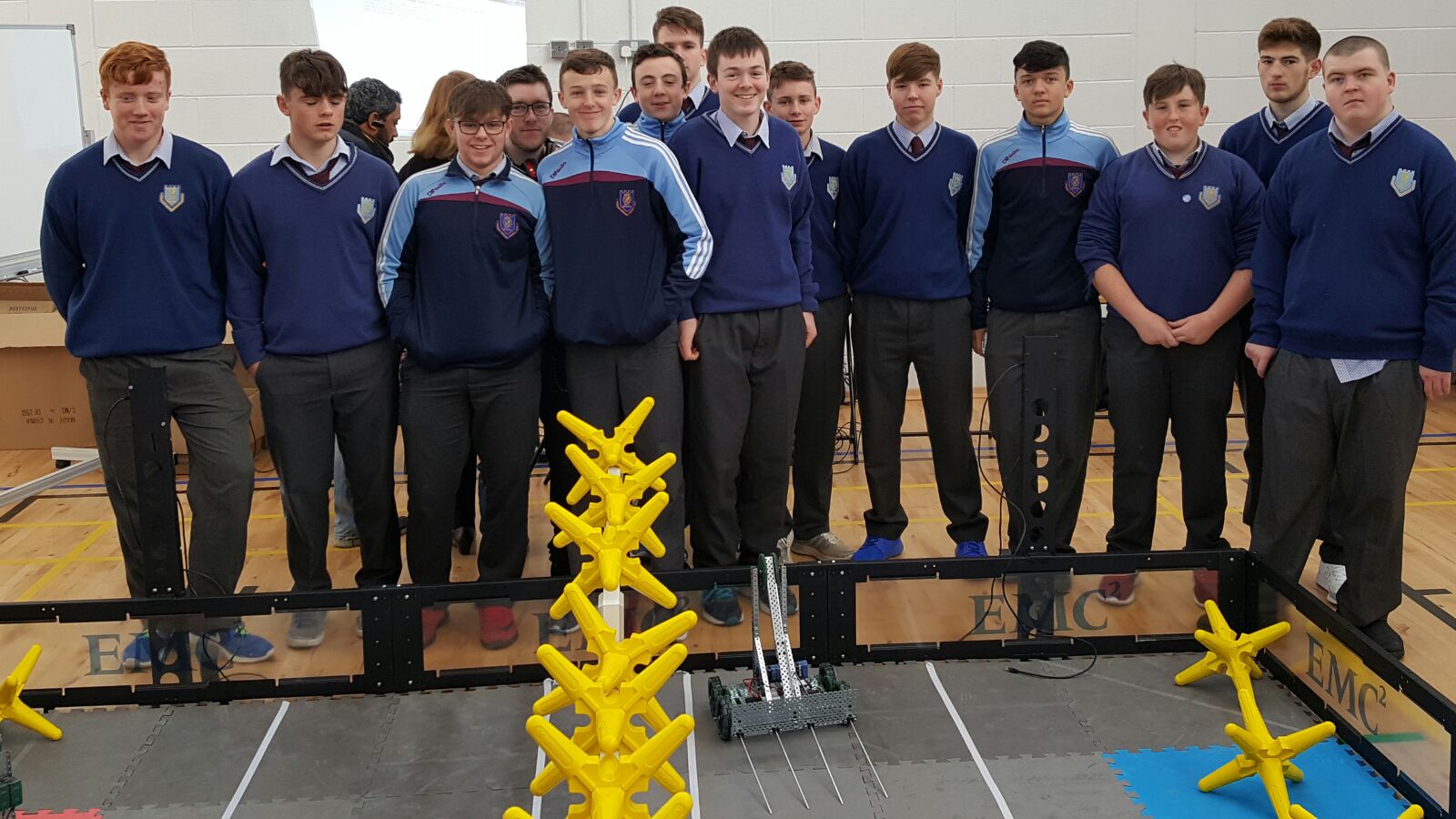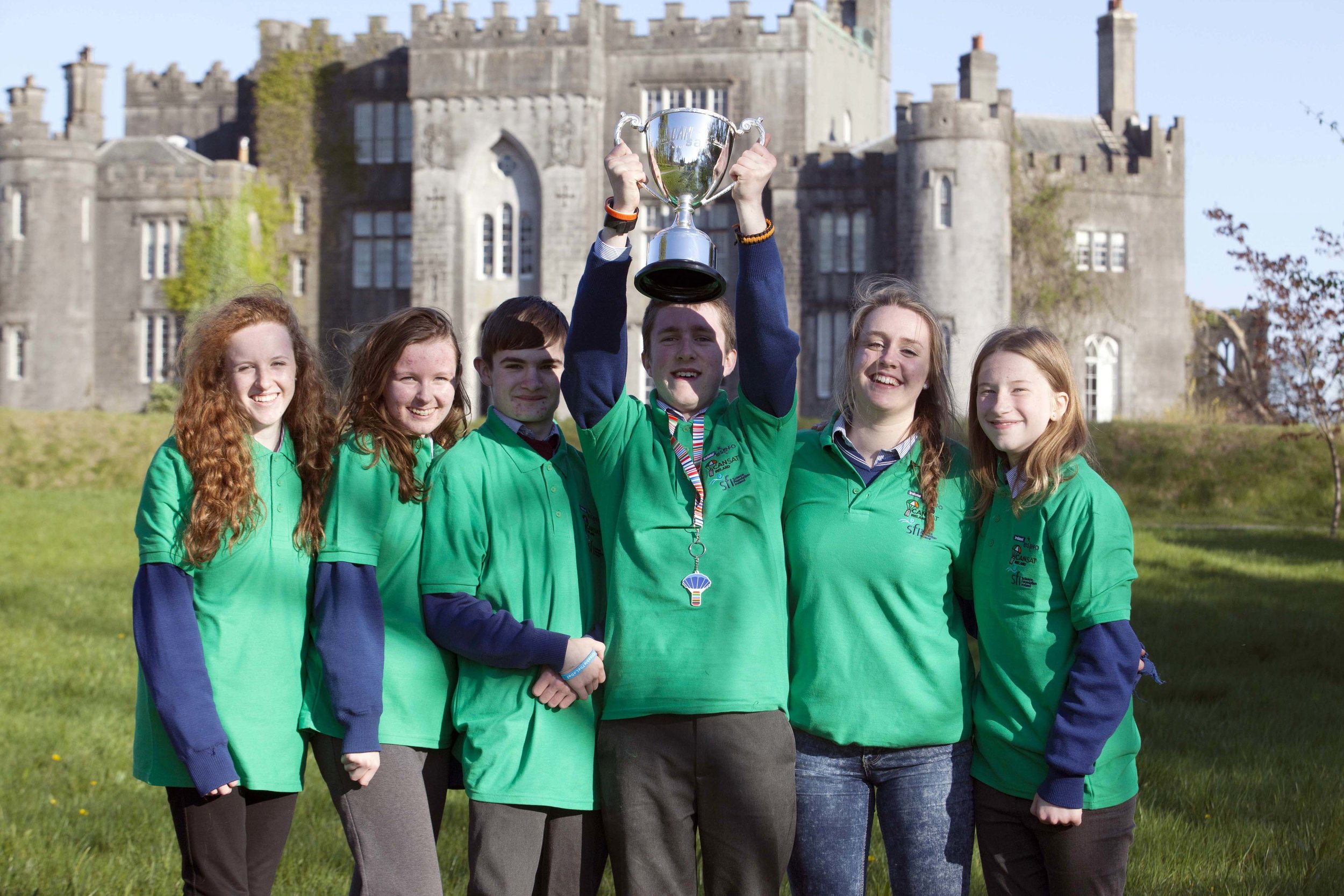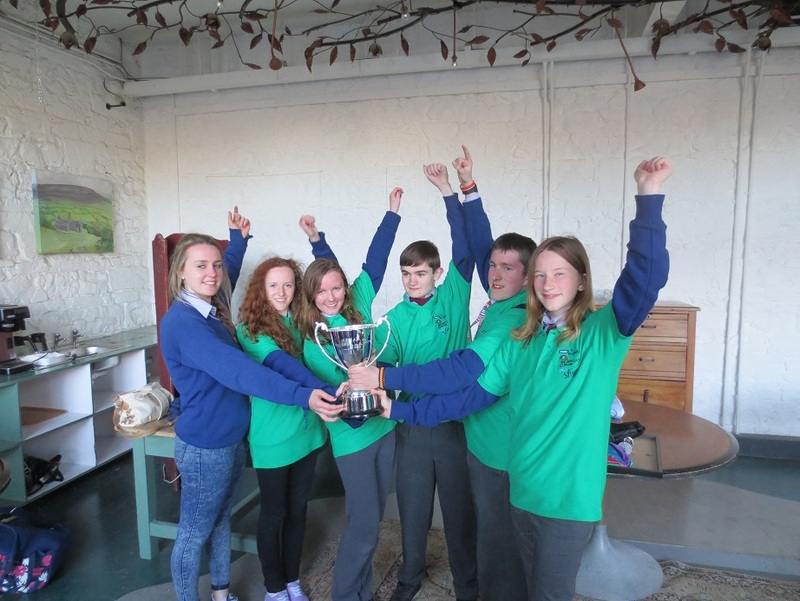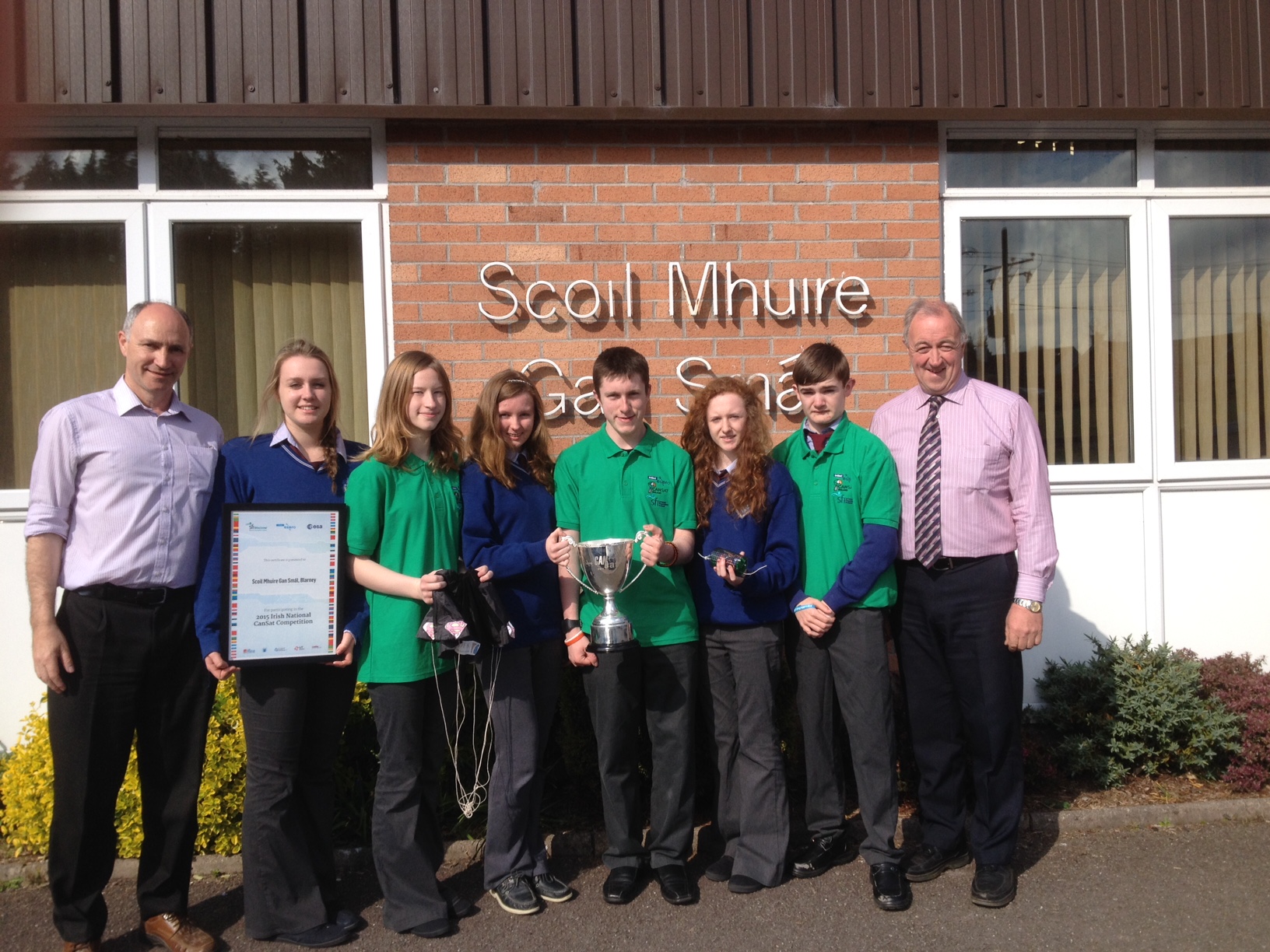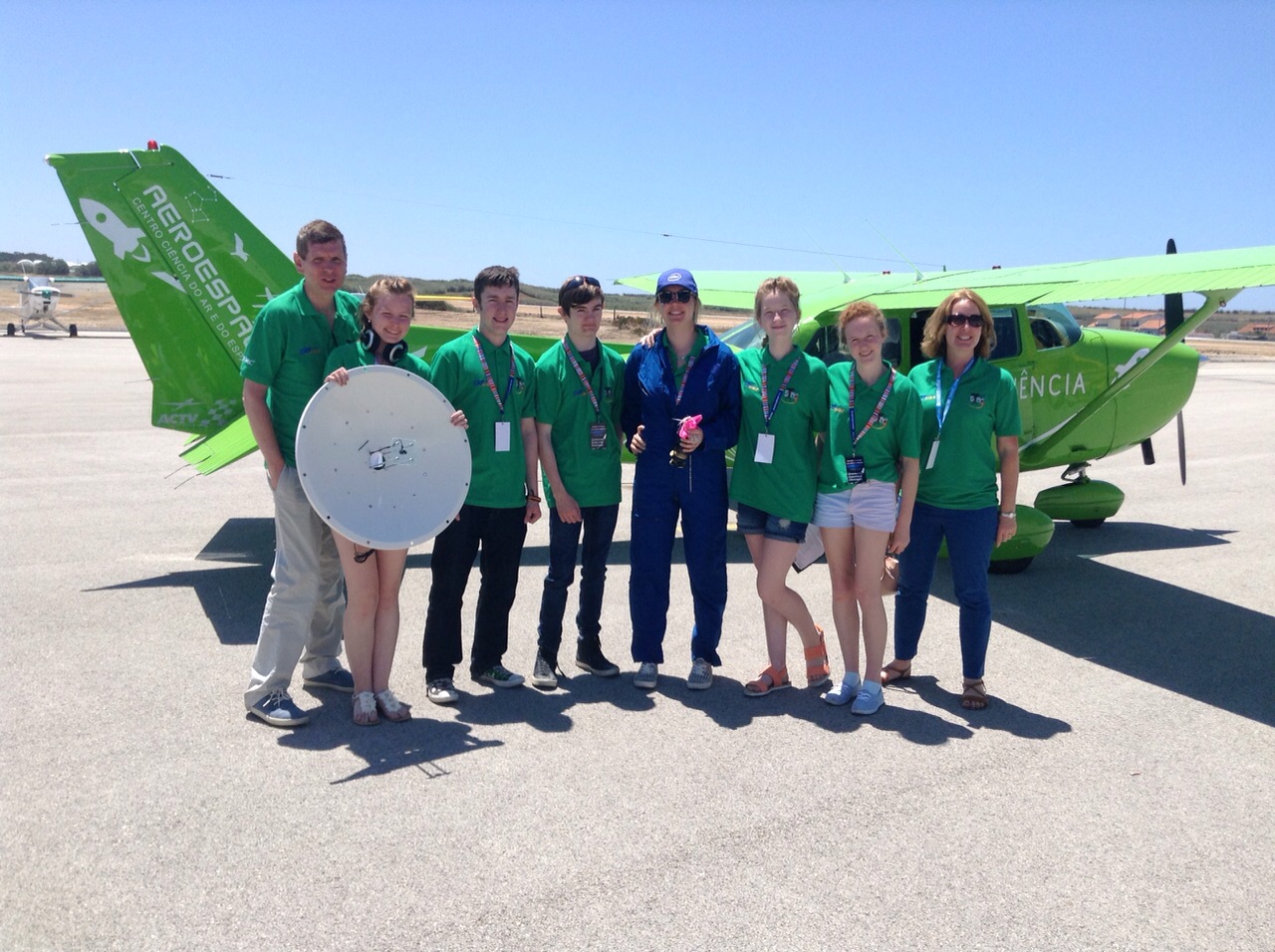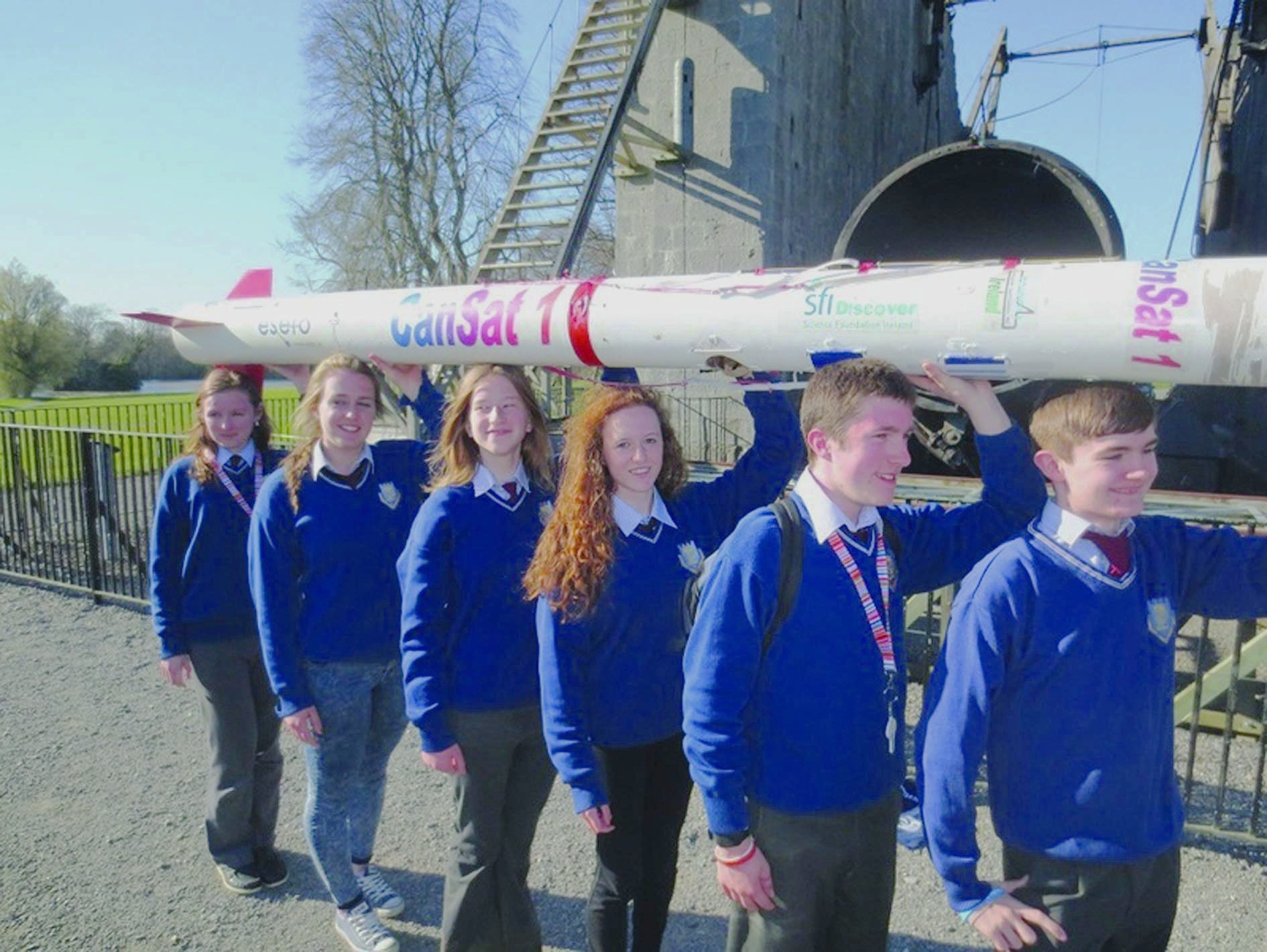Young Scientist
Scoil Mhuire Gan Smál has a long and proud history of participation in the Young Scientist and Technology Exhibition. 1982 was the year of our first entrant and winner of his category. Since then the school has been represented almost every year.
A very large number of students have benefited from the experience. The confidence gained from collecting, organising and presenting data is a huge asset for anyone. So many students have said that, when doing job interviews, by far the most important item on their CV was their involvement in Young Scientist.
The achievements of our students are a great source of pride and joy to the school. The list of prize-winners gives a good indication of the talent, energy and enthusiasm that has been fostered in the school.
The list gives the main prize-winners over the years. Many other students have won prizes in their categories. Sarah Healy and Miriam Murphy were our most recent winners in 2018 winning First Prize in their caegory for their project on the effects of Diabeties on children. Many others again have taken part and learned from and enjoyed the experience.
Overall National Winners
2010 - Richard O Shea, Bio Mass Stove
Winner of Young Scientist of the Year award. Winner of Self Help Africa Award. Winner of award at European Young Scientist competition in Portugal. Richard received the prestigious honour for his pioneering work on the design of a biomass-fueled cooking stove for use in developing countries.
1999 - Sarah Flannery, Cayley–Purser algorithm
Winner of the 1999 Esat Young Scientist Exhibition for development of the Cayley–Purser algorithm. The project, entitled "Cryptography – A new algorithm versus the RSA", also won her the EU Young Scientist of the Year Award for 1999.
Robotics
Annually our school robotics group entered the Vex EDR robotics national finals held in CIT. This is the first year the school has been part of this programme. Vex Robotics is a programme which aims to promote STEM (Science, Technology, Engineering and Maths) Learning. The program is co-ordinated by DellEmc and has been running since 2012. Vex Robotics is a worldwide competition with a different task or game set out every year. Countries all over the world are involved with the likes America, China and Canada very prominent. The winner of the National finals travels to America to take other countries as the Irish representive.
This year's game is called Starstruck and the objective is to have as many stars and bags on the opposition court at the end of the 2 minute game. This can be achieved by the robot firing the objects over or underneath the fence to the opposition’s side. At the end of the two minutes if you can get your robot to climb up and hang on a pole you get 12 bonus points. As well as the game the students must complete a handbook and set up a pit on the day. The handbook is evidence of all the work carried out on the robot from start to finish as almost a diary type entry again paying particular interest to STEM. The pit is an important element to be set up on the day. Judges will walk around and assess the quality of the pit while also interacting with the group and students and getting a better feel for the group effort as a whole. SMGS entered a team this year called Blarney Bubble with 14 transition year students and 1 leaving cert student. They were all given various roles within the group such as captain (Sean O Reilly) vice captains (Trevor Harrington and Stephen Linehan) to 3 students in the build team, 3 students in the design team, 3 students in the programming team and 3 students in the media team. Each student knew their role and the importance it brought to the group as a whole.
On the 1st of December 2016 the group went to a scrimmage practice event held in Buttevant. This was an important day for the group as it was the first time they got to see other team’s robots up close and personal, and test themselves out against them. The students encountered many different problems on this day and it was a massive learning curve as they went back to the drawing board again in preparation for the finals on the 20th of January. The students put in a big effort, including coming into the school for the day on their Christmas holidays to work on the project.
On Friday the 20th January we set out for CIT. At the start of the year there were 38 registered secondary schools involved. The vast majority of these groups would have had experienced or part took in finals before. We went through a qualification period where we had 7 matches against opposition teams. We won 4 games....drew 1 game and lost 2 giving us an overall place at the end of the qualification period of 8th. The top 16 teams went through to knockout as the rest of the teams exited the competition. In the last 16 round, you are paired off with another team in an alliance knockout section. SMGS were paired off with Colaiste Choilm Ballincollig, but unfortunately were knocked out in the quarter finals to the eventual winners. Although the group didn't win the competition and main award, they did win one of the other 4 awards called the judges award which is probably next best and highest ranked award. The judges award is given to the best team the judges spoke to as the travelled around from pit to pit. The judge’s award involved the set up and display of the pit, the engineering handbook and the interaction with the group as they were questioned about their robot.
The students were very pleased to come home with this award especially in their first ever attempt and would look forward to challenging themselves again to get more success next time out. The group would like to thank everyone involved in the school that helped them in one way or another and the co-operation of their teachers.
ESA Cansat Competition
Students from 14 ESA member states across Europe participated in this unique European Space Agency (ESA) competition to build a CanSat – a simulation of a real satellite integrated within the volume of a soft drinks can – which was then launched by rocket to a height of 1km.
The test for teams was to include all the major subsystems found in a satellite, such as power, sensors and a communication system. At launch stage this week, the primary mission was to measure temperature and air pressure, and transmit the data to the ground station – a laptop.
As a secondary mission, Team Steve from Scoil Mhuire Gan Smál in Blarney chose to develop a state-of-the-art soft landing system for the satellite, deployed via a two-way communication system; an accelerometer which sends data from the satellite back to the ground-station throughout its flight; and a satellite retrieval system based on light and sound signals. Teams then analysed the data and presented their findings to a panel of judges.
The team from Scoil Mhuire Gan Smál have been gearing up for the competition since October, having recently fought off stiff competition from eight other Irish teams to scoop first place at the 2015 ESERO Ireland – CEIA CanSat national final at Birr Castle, Co. Offaly. Teams worked with mentors and industry partners to select missions for their CanSats and test and integrate the components.
“We’ve loved every minute of the CanSat experience. The CanSat challenge is no mean feat – from wiring up the satellite components, fitting them together within the volume of a can, analysing data, and presenting to a panel of judges – but it’s been an incredible journey as well as lots of fun and to be here in Portugal representing our country this week is a real honour!”
Source: http://irishtechnews.ie/cork-school-commended-for-stellar-performance-at-european-rocket-science-competition/
Scifest 2016
Sarah Sweeney and teacher Seán Foley won the SFI Discover Best Project Award at SciFest 2016. Sarah’s project was titled Maths Behind Music - an investigation into the simulation of music instrument timbres by spectral analysis and reconstruction using Fourier series.
She exhibited at the National Scifest Finals later in the year. Sarah studies music theory and piano at the CIT Cork School of Music.
SMGS - Young Scientists Hall of Fame
1982: John Motherway – 1st in Junior Biological and Ecological Sciences
1983: John Motherway – 3rd in Intermediate Biological and Ecological Sciences
1995: Vincent Foley – Forbairt prize for project with commercial potential
1996: Vivienne Galvin, Jennifer O Mahony, S. O Donovan – Forbairt prize
1998: Sarah Flannery – Intel prize for best project in Chemical, Physical and Mathematical Sciences category. Winner of a number of major prizes in the U.S.
1999: Vincent Foley – Intel prize, best project in Chem, Phys and Math Sciences category.
1999: Sarah Flannery – Winner of Young Scientist of the Year award.- Winner of first prize at European Young Scientist awards in Greece.
2000: Conor Foley – 1st prize in Junior Chemical, Physical and Mathematical Sciences. Adidas award for best project on a sporting theme
2001: Deirdre Murphy – 1st prize in Senior Social and Behavioural Sciences.
2001: Eoin O Connell - 1st prize in Junior Technology category Analog Devices prize for best overall project in the technology category.
2001: Eoin Hallahan – 2nd prize in Junior Maths, Physics and Chemistry
2001: Clair Collins, Sandra Crotty – 3rd prize in Intermediate Social and Behavioural
2003: Brian Foley – 3rd Junior Technology
2004: Eoin O Connell - 1st prize in Intermediate Individual Technology category - Midas award for technology projects.
2006: Anthony O Brien – 2nd prize in Senior Individual Technology category.
2007: Anthony O Brien – 1st prize in Senior Individual Technology category.
2008: Eoin Boland – 1st prize in Senior Individual Social and Behavioural category
2009: Eric Higgins – Comreg Award for best project on communications 2nd prize in Senior Individual Technology category.
2009: Richard O Shea and Ruairi Kenny – 3rd prize in senior Maths, Physics and Chemistry
2010: Ruairi Kenny – 3rd prize in Senior Individual Technology category.
2010: Richard O Shea – Winner of Young Scientist of the Year award.- Winner of Self Help Africa Award - Winner of award at European Young Scientist competition in Portugal
2011: Saoirse Gould and Niamh O Donovan - 3rd prize in Senior Group Technology category.
2011: Robert Gabriel – 3rd prize in Senior Individual Technology category. - Avaya Communications Special Award - HEAnet and JANET Special Award - Place on BT Business of Science and Technology Programme
2012: Robert Gabriel – 2nd prize in Senior Individual Maths, Physics and Chemistry






